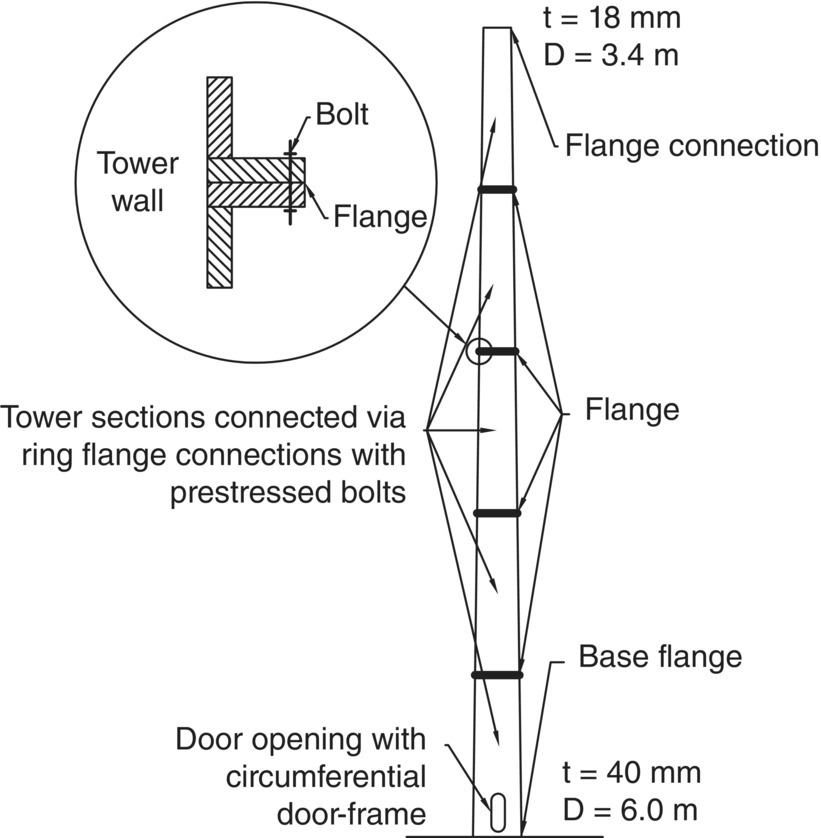7Tower and Foundation
Torsten Faber
7.1 Introduction
Today’s wind turbines soar to dizzying heights. A wind turbine (WT) with a 100 m tower and an overall height including the rotor blades of 150 m competes with the tower of Cologne Cathedral. The current largest wind turbines with more than 5 MW capacity can even reach hub heights of 140 m and soar to an overall height of 200 m, far above the Cologne tower.
These impressive large structures are designed for a life of 20 years. The plant manufacturers guarantee an availability of 98% including servicing. The full-load hours expected onshore is around 2000 hours per year, with a load change of 109. Offshore, on the high seas, almost twice as many full-load hours are expected.
The standard tower today is a steel tube and consists of individual tower sections that are fixed to each other by means of ring flanges with prestressed bolts (see Figure 7.1). The tower is connected to the foundation by up to 160 bolts.

Figure 7.1 Structure of the tower of a wind turbine
For instance, with a 2 MW plant (tower height 80 m), the wind that acts on the rotor creates a horizontal force on the tower head of 1500 kN. This corresponds to the weight force of almost 100 cars, each of 1.5 tons (100 × 1500 kg × 9.81 m/s2 = 1472 kN). This force pulls the tower head in the direction of the wind, and with the tower as a lever at the base (foundation) this generates ...
Get Understanding Wind Power Technology: Theory, Deployment and Optimisation now with the O’Reilly learning platform.
O’Reilly members experience books, live events, courses curated by job role, and more from O’Reilly and nearly 200 top publishers.

